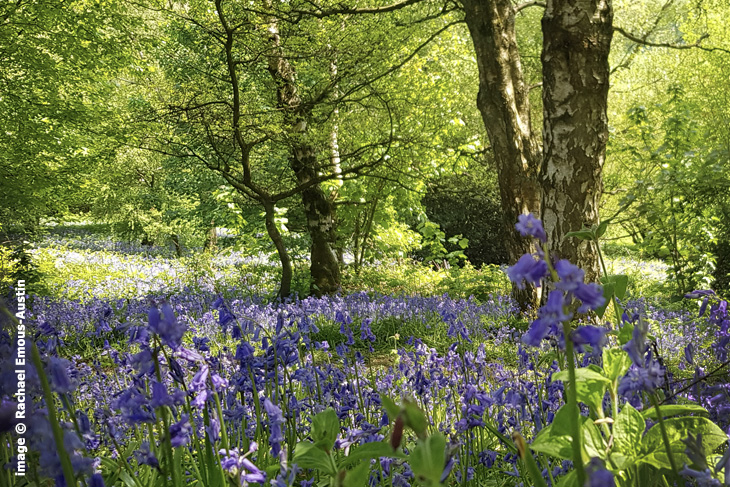November 29, 2023 / By rachel
Biodiversity Net Gain: A Game-Changer for Conservation and Nature
By Rachel Palmer and Rachael Emous-Austin
Biodiversity Net Gain (BNG) is poised to become a game-changer for environmental conservation. Originally planned to become mandatory in November 2023, implementation was postponed until January 2024.*
What?
In a nutshell, BNG aims to ensure that any developments or new buildings are no longer built on high value habitats, rather on brownfield or previously developed land and that if they are built on greenfield sites, they will contribute more positively to the natural environment than negatively. To measure this, the biodiversity of a site is quantifiably valued before the planning application is made and a minimum increase of 10% is designed and specified with a fully costed 30 year management plan submitted in order to validate the planning application.
If it is not possible to increase the biodiversity of an area through the preferred on-site improvements, two alternative options are available to the developers to offset the requirements. Off-site biodiversity improvements to be carried out by the developer can be agreed upon through legal channels. Or, biodiversity credits can be purchased by the developer, these in turn fund projects for the enrichment of The National Nature Recovery Networks.
Crucially, a spatial risk factor is added if BNG cannot be achieved on site, or within the Local Planning Authority (LPA) or National Character Area (NCA). So if it has to be made in the neighbouring LPA or NCA, then an additional 25% will be required; if it is outside of the neighbouring LPA or NCA, then an additional 50% will be required.

How?
In simple terms, BNG maintains and reinforces the mitigation hierarchy and is in addition to existing measures; it aims to use planning policies to improve the natural environment by
- increasing the biodiversity of species
- ensuring development contributes to and enhances the natural and local environment
- establishing ecological networks to promote natural regeneration and increase resilience of the natural environment.
- avoiding the loss of natural habitat.
- preventing further decline in the biodiversity of species.
To calculate biodiversity loss or gain, Natural England’s Biodiversity Metric 4.0 is employed, assessors must be qualified and for example, hold a level 4 or 5 Field Identification Skills Certificate, assessing factors include:
- Habitat Areas, measured in hectares; such as woodland, grassland and orchards.
- Linear habitats, measured in meters; such as hedgerows and tree avenues.
- Linea habitats, measured in meters; such as watercourses and ditches.
Each habitat type must achieve a minimum 10% net gain after development in order meet the overall 10% requirement.
A Biodiversity Gain Plan must be submitted, this includes the completed metric calculator, with full specification for landscape planting works and a costed 30 year management plan in order for the application to be validated.
It is recommended that both the ecologist as surveyor of habitats and the landscape architect as the designer of habitats are both engaged at the very outset in order to assess whether or not to purchase the site in the first place. The first point on the mitigation hierarchy is to avoid biodiversity impacts and this may simply mean, do not purchase the site.
Some environments, like ancient woodlands, lowland fens and blanket boglands, are irreplaceable and will require individual assessment.
Who is Responsible for Monitoring the 30 Year Plan ?
It will be the landowner or developer’s responsibility to ensure monitoring and reporting obligations are fulfilled, or adequately delegated to another body (with necessary funding), to the specifications set out in the Biodiversity Gain Plan.
The number of monitoring assessments will depend on the habitat type and extent, but a typical schedule for a medium sized habitat creation project might result in reports for years 2, 5, 10, 20 and 30
Failure to deliver, or attempt to deliver, biodiversity net gain outcomes can result in enforcement action.

When?
January 2024 for major developments and all planning applications from April 2024, with no need for retrospective applications.

*
For residential: where the number of dwellings to be provided is between one and nine inclusive on a site having an area of less than one hectare, or where the number of dwellings to be provided is not known, a site area of less than 0.5 hectares.
For non-residential: where the floor space to be created is less than 1,000 square metres OR where the site area is less than one hectare.
It will be mandatory for all planning applications from April 2024.
Thank you to Rachael Emous-Austin of Austin Design Works for her generous contribution to this article and for sharing her extensive knowledge of the subject with the RRA Architects Team.
Graduating from the University of Gloucestershire over 25 years ago, Rachael has spent her time working on large country estate projects, and preparing masterplans working as part of multi-disciplinary consultant teams for development sites and achieving biodiversity net gain.

